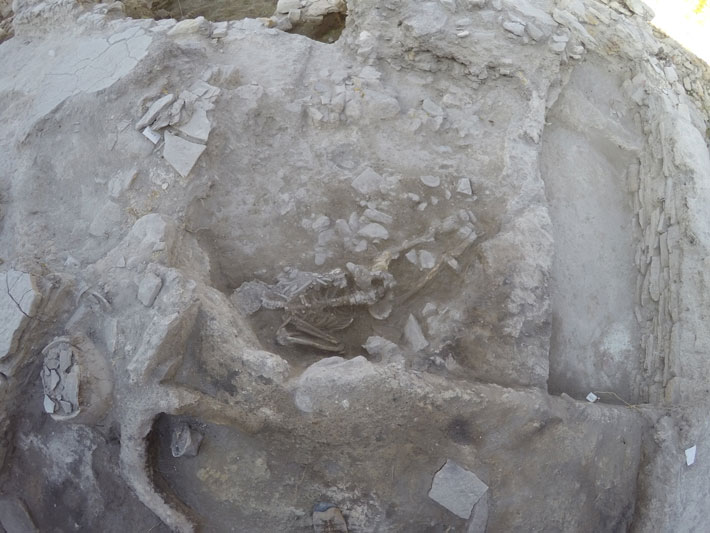Died 3,600 years ago: the skeleton of a young man who became a victim of a tsunami found in Turkey
An international team of researchers has found and excavated the remains of a young man killed approximately 3,600 years ago by a tsunami created by the eruption of Thera—a volcano located on what is now the island of Santorini.
In their paper published in Proceedings of the National Academy of Sciences, the group describes how the remains were found and how they were identified as belonging to a victim of the Thera tsunami.
Prior research has shown that the eruption of Thera was a major event—so powerful that it has been blamed for the decline of the Minoan civilization on the island of Crete.
Prior research has also shown that the eruption occurred sometime during the 1500s to 1600s B.C.
Santorini is located in the eastern Mediterranean, north of Crete, between southern Greece and southern Turkey. And while evidence of the ash that fell from the skies in areas all around the eruption site has been plentiful, there has been scant evidence of the tsunami.
This is because tsunamis tend to pull debris and bodies back into the sea, rather than leave covered evidence onshore. And because of that, the remains of the victims of the Thera tsunami have never been found—not one single body—until now.

The remains of the young man were found at a dig site known as Çeşme-Bağlararası. It sits along a shoreline on Çeşme Bay in western Turkey.
The dig site has been yielding Late Bronze Age artefacts for several years but it was only recently that the digging uncovered evidence of a tsunami—layers of ash and debris that were prevented from being washed back into the sea by a retaining wall.
In addition to the remains of the young man, the researchers also found the remains of a dog.
The evidence also showed that the area had been struck by several tsunamis related to the Thera eruption. Radiocarbon dating of materials surrounding the remains showed them to be from a time no earlier than 1612 BC.
The researchers also found damaged walls, rubble, sediment and ash, all evidence of multiple tsunamis. They also found evidence of what they describe as misshapen pits—likely created by people looking for victims shortly after the tsunamis struck.
The remains of the young man were found pushed up against a retaining wall, positioned in a way familiar to those who have worked on tsunami search efforts in modern times.





